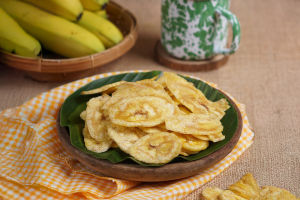Lykkers, have you ever wondered why dragon fruit is such a popular fruit worldwide? Its vibrant colors, juicy flesh, and subtle sweetness make it a standout snack.
It can be enjoyed alone, blended into smoothies, or added to desserts and salads.
But choosing the tastiest dragon fruit and getting the most out of its flavor can make a huge difference. In this guide, we'll show how we pick the right fruit, enjoy its textures and flavors, and even store it to keep it fresh longer.
Picking the Best Dragon Fruit
When we're at the market, the first thing to look at is the shape and skin. White-fleshed dragon fruits are usually oval or slightly elongated, with bright pink or pale yellow skin and fresh green tips. Red-fleshed ones are rounder and shorter, with tightly packed scales.
A slightly soft fruit signals ripeness. If it's too hard, it may not be sweet yet, and if it's overly wrinkled or mushy, it's past its peak. The scales should be fresh-looking, not dried out. By paying attention to these visual and touch cues, we can ensure every bite is juicy and flavorful.
We also like to check the fruit's weight. A heavier dragon fruit often indicates that it is juicier inside. By combining these small tricks—shape, softness, color, and weight—we can pick fruits that taste amazing and are at peak freshness.
Texture and Flavor Differences
White-fleshed dragon fruit has a crisp, refreshing texture. Its flesh is soft but slightly crunchy, lightly sweet, and perfect for a fresh, healthy snack. Red-fleshed dragon fruit, in contrast, is soft, smooth, and very sweet. Its juicy flesh melts in our mouth and is often enjoyed by those who crave a more indulgent taste.
The flavors also vary depending on ripeness. A perfectly ripe white-fleshed fruit tastes subtly sweet with a refreshing crunch, while a red-fleshed one can be almost candy-like in sweetness. By tasting a small piece before buying, we can make sure it meets our preferences.
Health Benefits While Enjoying Taste
Tasty dragon fruit isn't just about flavor—it's packed with nutrients. White-fleshed fruit contains more dietary fiber, which helps us maintain digestion and prevent mild constipation. It's also lower in sugar, making it great for light snacks or mixing into breakfast bowls.
Red-fleshed dragon fruit is rich in antioxidants called betalains and also contains iron. These nutrients can help boost our energy, support healthy blood, and reduce inflammation. Even though red-fleshed fruits have slightly less fiber, they are still a nutrient-packed treat for days when we want something sweet and revitalizing.
By understanding these benefits, we can select the fruit that best fits our taste and nutritional goals.
Creative Ways to Enjoy Dragon Fruit
We don't have to eat dragon fruit plain to enjoy it. Cutting it into cubes and adding it to a fruit salad makes the dish colorful and fresh. Blending it into smoothies gives a naturally sweet, creamy drink without adding sugar.
It can also be served with yogurt or topped with nuts, chia seeds, or granola for an easy, healthy dessert. Some of us like to freeze small pieces for a chilled snack, or even mix them into tropical bowls with pineapple and mango. By trying different ways to enjoy dragon fruit, we make eating it a fun and tasty routine.
Storage Tips for Maximum Freshness
To keep dragon fruit tasty, we need to store it properly. At room temperature, it's best eaten within 2–3 days. For longer storage, we can refrigerate it for up to a week. Once cut, wrapping the pieces tightly in plastic wrap or keeping them in an airtight container preserves moisture and flavor.
If we plan to eat it later in the week, pre-cutting and freezing small portions is a smart trick. Frozen dragon fruit is perfect for smoothies or chilled desserts. These small steps ensure that every bite remains juicy, fresh, and flavorful.
Extra Tips When Buying
Lykkers, here are a few extra tricks we use when shopping for dragon fruit:
- Choose fruits with bright, even-colored skin—dull or brown patches mean the fruit is overripe.
- Avoid fruits with dry or shriveled scales. Fresh green tips indicate freshness.
- For a juicy bite, pick slightly heavy fruits—they usually have more water content.
- Mix white and red varieties in a fruit bowl for a visually stunning and flavorful combination.
Enjoy Every Bite
Lykkers, dragon fruit is a vibrant and nutritious fruit that adds color and flavor to our meals. By learning how to pick the best fruit, understanding its textures and flavors, exploring creative ways to eat it, and storing it properly, we can enjoy every juicy bite. Next time we see dragon fruit at the market, let's select the ripest ones to enjoy every bite.
Eating dragon fruit isn't just about flavor—it's about making a small, joyful moment in our day!


